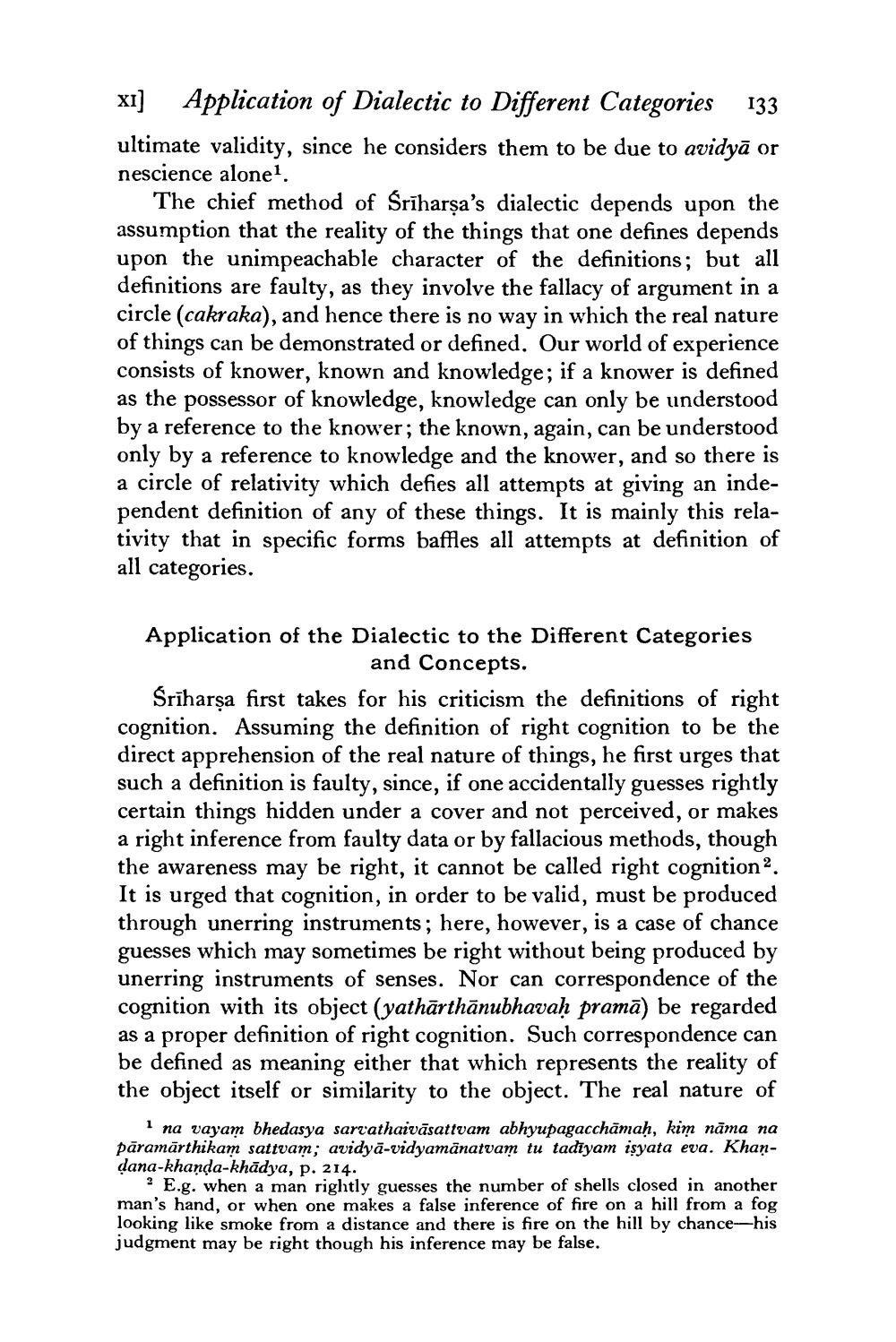________________
xi] Application of Dialectic to Different Categories 133 ultimate validity, since he considers them to be due to avidyā or nescience alonel
The chief method of Śrīharşa's dialectic depends upon the assumption that the reality of the things that one defines depends upon the unimpeachable character of the definitions; but all definitions are faulty, as they involve the fallacy of argument in a circle (cakraka), and hence there is no way in which the real nature of things can be demonstrated or defined. Our world of experience consists of knower, known and knowledge; if a knower is defined as the possessor of knowledge, knowledge can only be understood by a reference to the knower; the known, again, can be understood only by a reference to knowledge and the knower, and so there is a circle of relativity which defies all attempts at giving an independent definition of any of these things. It is mainly this relativity that in specific forms baffles all attempts at definition of all categories.
Application of the Dialectic to the Different Categories
and Concepts. Sriharsa first takes for his criticism the definitions of right cognition. Assuming the definition of right cognition to be the direct apprehension of the real nature of things, he first urges that such a definition is faulty, since, if one accidentally guesses rightly certain things hidden under a cover and not perceived, or makes a right inference from faulty data or by fallacious methods, though the awareness may be right, it cannot be called right cognition?. It is urged that cognition, in order to be valid, must be produced hrough unerring instruments: here, however, is a case of chance guesses which may sometimes be right without being produced by unerring instruments of senses. Nor can correspondence of the cognition with its object (yathārthānubhavaḥ pramā) be regarded as a proper definition of right cognition. Such correspondence can be defined as meaning either that which represents the reality of the object itself or similarity to the object. The real nature of
i na vayam bhedasya sarvathaivāsattvam abhyupagacchāmaḥ, kim nāma na pāramārthikam sattvam, avidyā-vidyamanatvam tu tadiyam isyata eva. Khandana-khanda-khādya, p. 214.
? E.g. when a man rightly guesses the number of shells closed in another man's hand, or when one makes a false inference of fire on a hill from a fog looking like smoke from a distance and there is fire on the hill by chance-his judgment may be right though his inference may be false.




